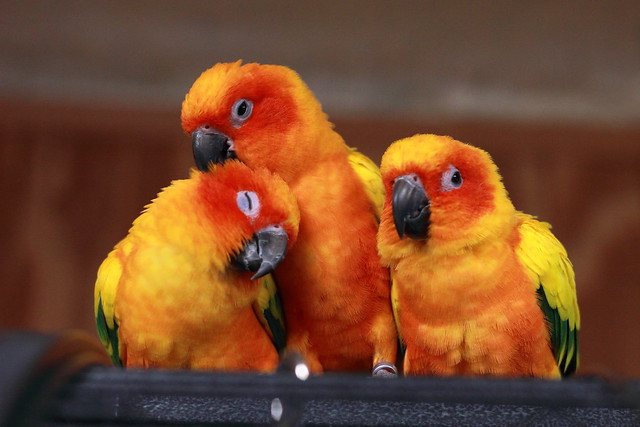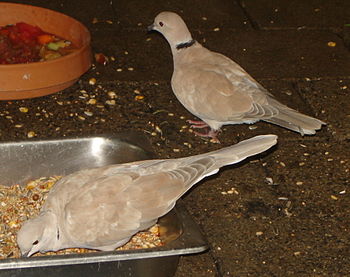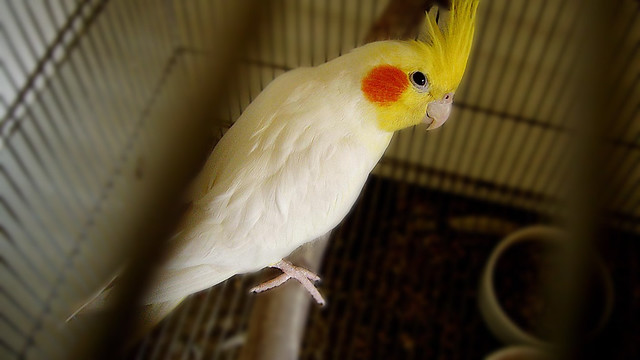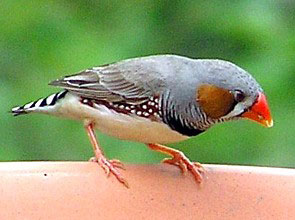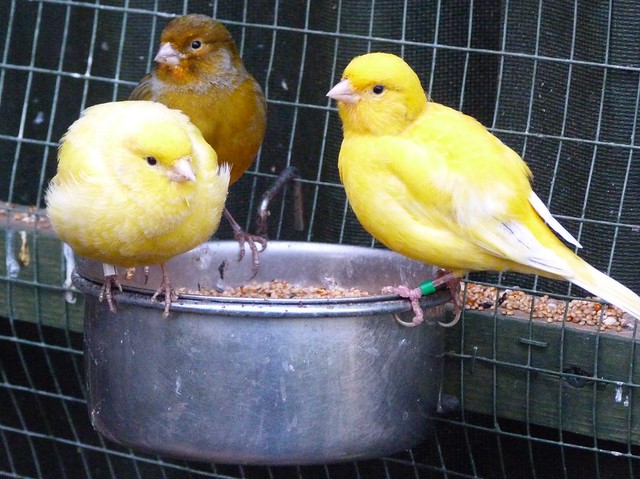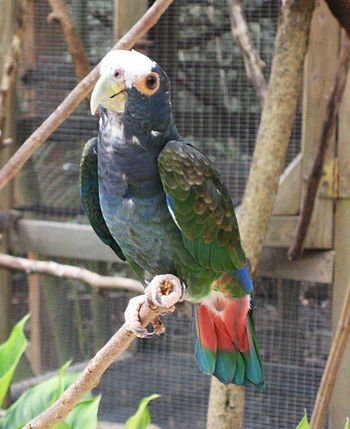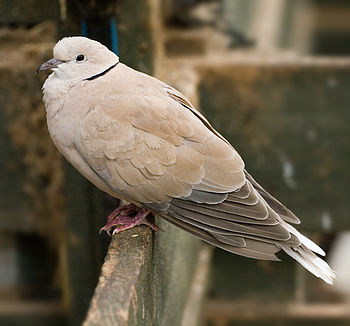Colorful, charming, cute, cuddly, cheeky. That's a conure
Conures are often described as having "personality plus", or as "big birds in little bird suits". They aren't very large parrots, but don't tell them that! Conures have an attitude to spare, which can make them somewhat of a challenge if an owner isn't prepared to establish rules and limits. And while I think their good qualities outweigh their bad ones, they certainly aren't perfect. No one should get a conure without learning the whole story, which goes something like this: Conures are awesome birds, but they have that voice!
In most species, the normal conure voice is an ear-piercing, high-pitched, grating screech that will make even a Moluccan cockatoo sit up and take notice. And a conure that's trying to be loud will make your eyes cross. Even if you get one that isn't particularly noisy, and not all individuals are, anyone near your home will know you have a parrot. The smaller conures like the green cheeks and maroon bellies aren't quite as bad since they lack the sheer volume potential of their larger cousins. If the sound level is a concern, it would be a good idea to look into one of these little guys. Leave the suns, jendays, nandays, cherry heads, blue crowns and such to someone who can deal with the loudness.
Given the right socialization and continued training, a conure shouldn't constantly be sounding off, but as with any parrot, some noise is to be expected. The most likely time for conure cacophony is when the family comes home from work or school in the afternoon. The bird wants out and everyone is going to know it! It's not easy to ignore an insistent conure. It is easy to "spoil" him by getting him out as soon as he starts in with the racket. With our first conure, a nanday named Freddie, we learned the hard way that you shouldn't make getting a bird out of its cage the nanosecond you walk in the door your main priority! Thankfully, conures are smart, and they can be taught that their demanding tone doesn't get them what they want. It does take some patience, however, and maybe some earplugs.
Noise factor aside, you can't ask for a friendlier or more affectionate little parrot. Conures love to snuggle. Just don't go overboard with it. Conures are very portable, and they love to go where you go. But wearing a conure broach isn't a good habit to start, not only because of the fashion statement you will make--tiny holes in all your shirts--but also because of the potential for your bird to become a spoiled brat if he doesn't get to hang out with you all the time. And we're not just talking about screeching. Nippiness is the conure's other unpleasant tendency. To keep your home brat-free, it's a good idea to vary your conure time with games and tricks. Luckily most conures like to play as much as they like to cuddle.
love to snuggle. Just don't go overboard with it. Conures are very portable, and they love to go where you go. But wearing a conure broach isn't a good habit to start, not only because of the fashion statement you will make--tiny holes in all your shirts--but also because of the potential for your bird to become a spoiled brat if he doesn't get to hang out with you all the time. And we're not just talking about screeching. Nippiness is the conure's other unpleasant tendency. To keep your home brat-free, it's a good idea to vary your conure time with games and tricks. Luckily most conures like to play as much as they like to cuddle.
Conures are boisterous birds and like to be active, so they need a cage that's slightly larger than what you might pick for a bird of their size. Amazon or African-grey cages are more appropriate than the cockatiel cages some owners tend to end up with. Look for a cage that's at least 2 feet wide, but take note of the bar spacing to make sure your bird can't poke his head through. Just about any type of toy goes over well and swings are usually appreciated. Also consider putting in a soft cloth or "snuggle toy", since conures like to sleep cuddled up next something. They're real softies, after all, despite that voice.
This article was co-authored by Chet Womach and professional bird behavioral specialist Kim Bear who consults for Birdtricks.com and has helped lots of their clients who own conures. Article Source: GoArticles |

